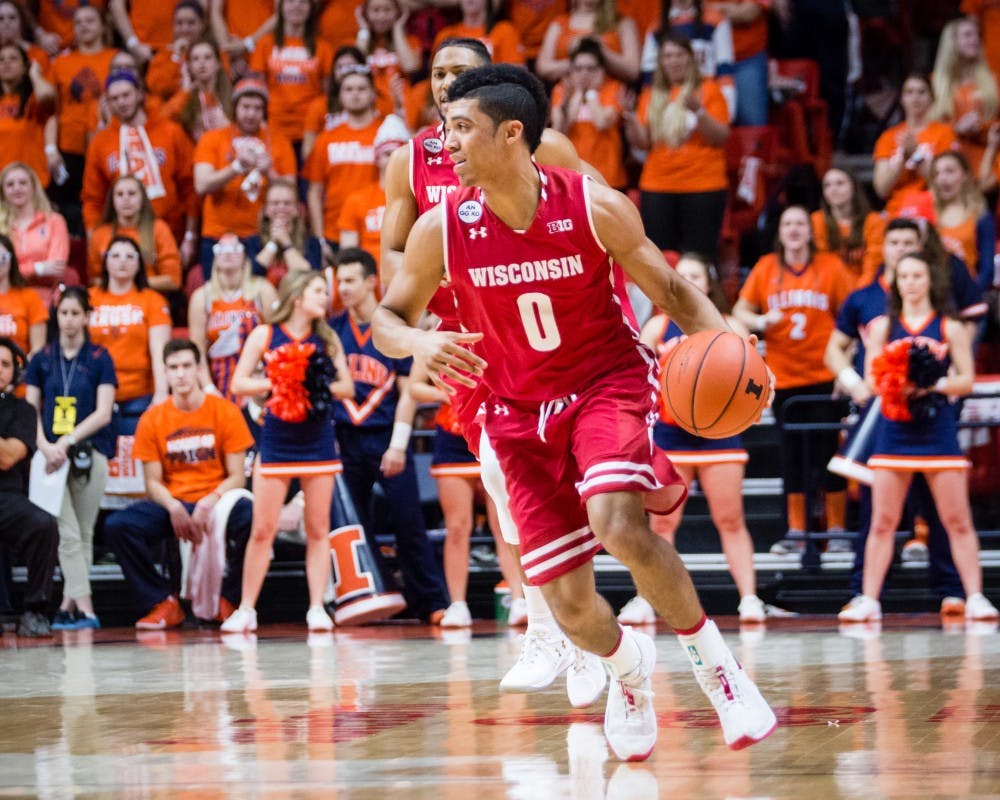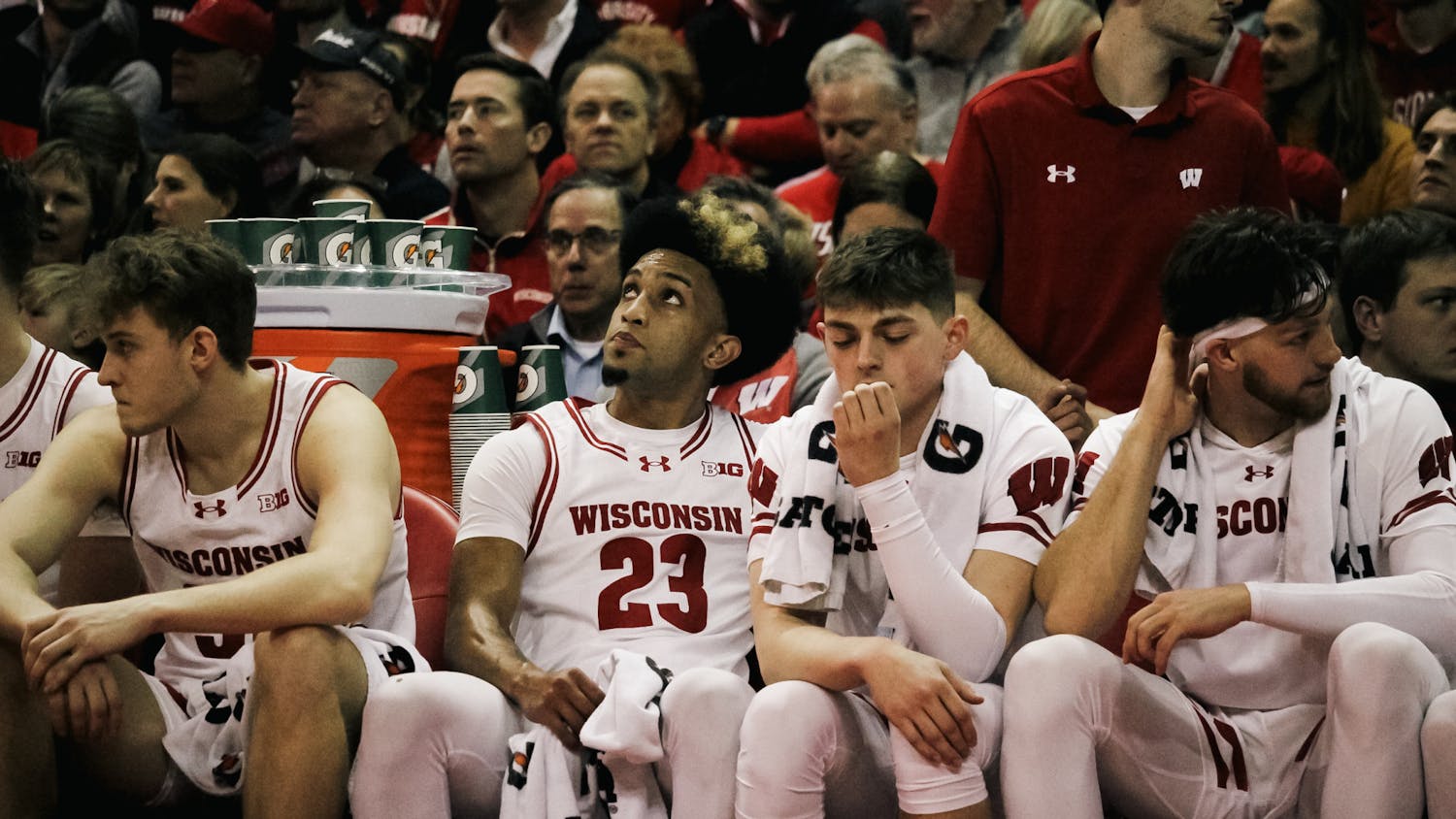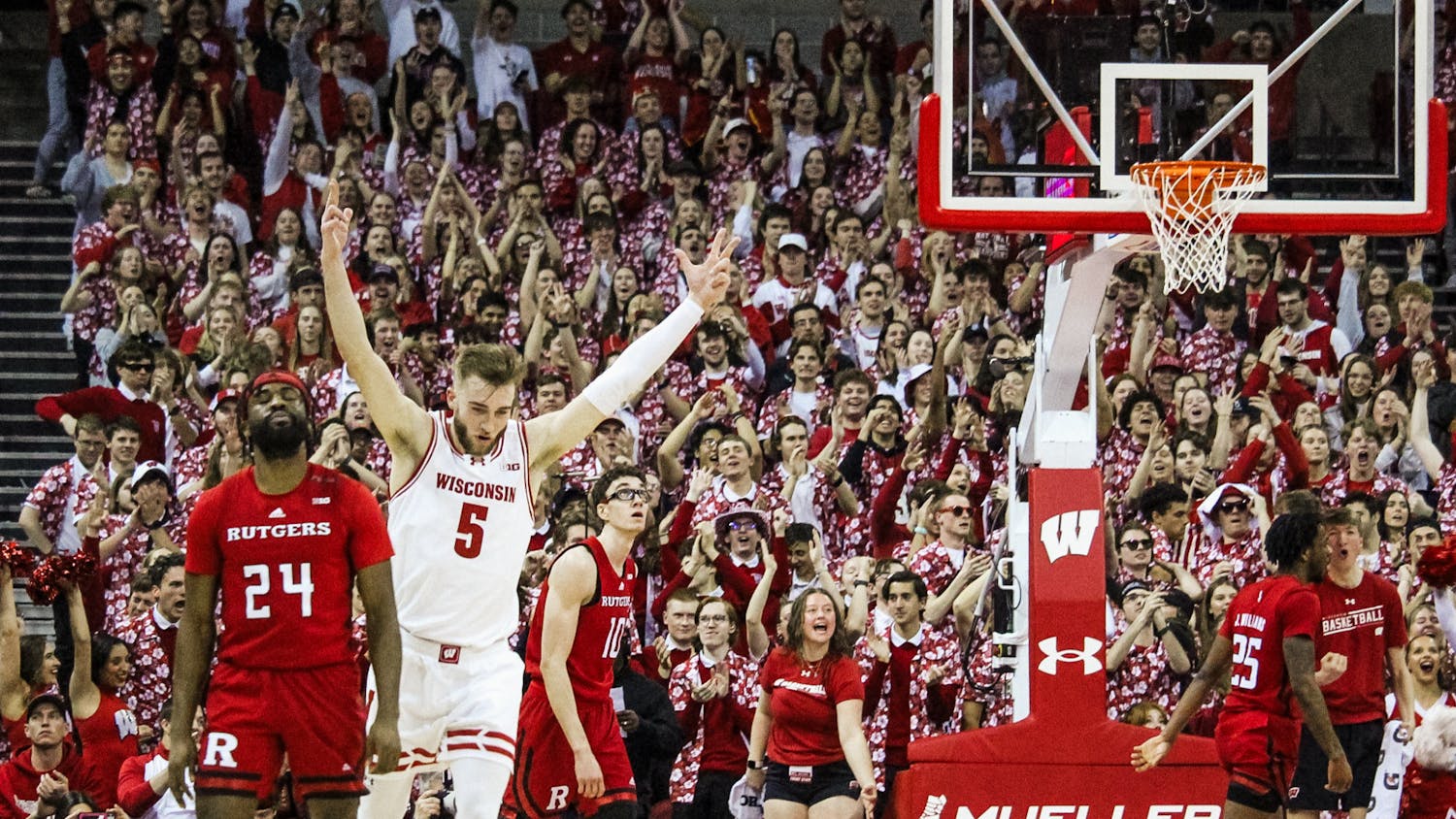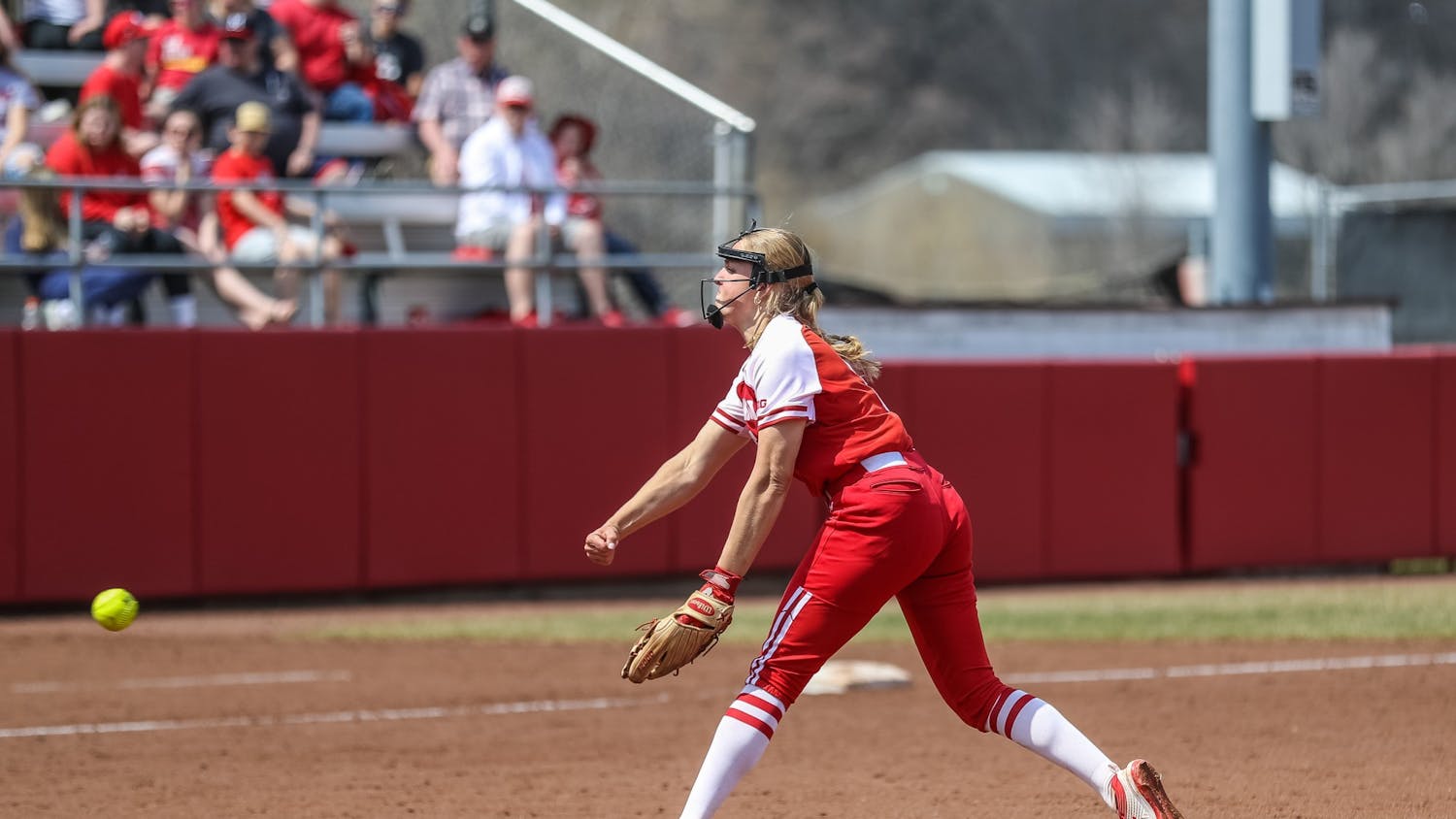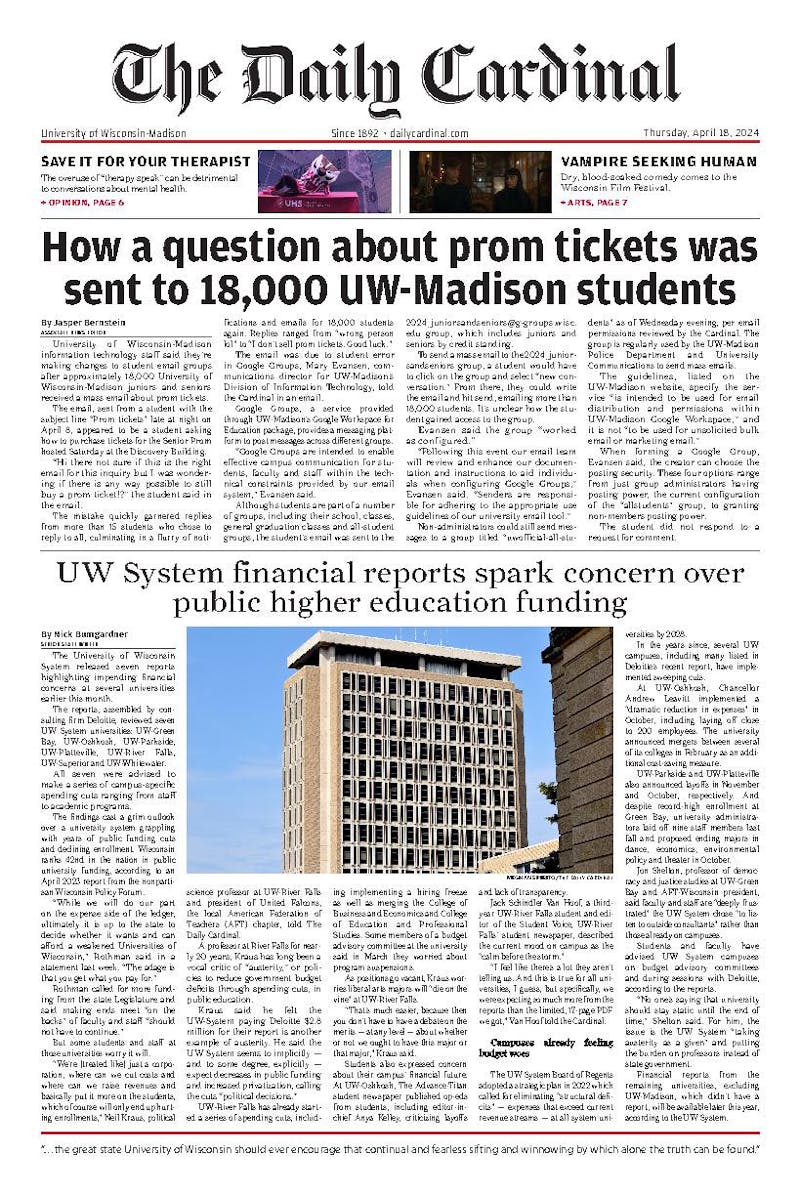It’s football Saturday in Madison, Wis., and the Badgers are set to kickoff at 11 a.m. All around campus, thousands of students wake up unusually early. They head to the nearest dining hall or make food in their apartments. But breakfast is consumed only out of necessity. It’s in preparation for the long day of drinking ahead of them.
That’s the story of game day for most UW students. But for D’Mitrik Trice and Aleem Ford, two freshmen on the UW men’s basketball team, the routine couldn’t be more different.
Trice and Ford are roommates. On football Saturdays, they both tend to sleep in a bit later. They go to the nearest dining hall for breakfast, taking note of all the students wearing their red-and-white bibs, throwing parties and drinking.
“We kind of just walk by,” Trice said. “We’ve never actually joined somebody.”
Trice and Ford enjoy walking around campus on football Saturdays, but as non-drinkers, they’ve never felt the urge to join a tailgate. They’ve never even felt the urge to drink at a college party.
While the NCAA’s most recent study on student-athlete alcohol and drug use—done in 2014—finds that the majority of Division I student-athletes do consume alcohol, about 15 percent do not. Trice, Ford and a plethora of other student-athletes at UW do not.
In some ways, national drinking trends of student-athletes are similar to drinking trends of UW students. A 2009 study by David A. Yusko published in the Journal of American College Health found that Saturdays are the most common day for student-athletes to consume alcohol. Not surprisingly, according to 2013 data published by UW’s “Alcohol Edu” program, UW students tend to consume the most alcoholic drinks on Saturdays as pre-game tailgates full of beer and hard liquor emerge in full force.
Yet for non-drinking student-athletes, abstaining from drinking at a tailgate is not a problem.
“I like to toss around a football and play cornhole,” sophomore swimmer Cierra Runge, a non-drinking student-athlete, said. “Just be with my friends.”
Runge often tailgates with her teammates on the swim team, and they are joined by other Badger fans of all ages. They play music, grill burgers and have a good time. And while there is usually alcohol present, she chooses not to partake.
But Runge’s drinking habits, or lack thereof, make her an anomaly in the college swimming world. Almost 89 percent of all female swimmers say they have consumed alcohol in the last year. That’s the second-highest percentage of alcohol consumption among women’s sports.
Additionally, according to the NCAA, 88 percent of male swimmers say they have consumed alcohol in the last year. That’s the fourth-highest percentage among any men’s sport, just slightly below men’s golf, men’s lacrosse and men’s ice hockey.
By comparison, only 58 percent of men’s basketball players reported having consumed alcohol in the past twelve months, by far the lowest among any Division I sport.
Trice credits that number to the fact that basketball season last nearly the entire school year. From October to late-March, the Badgers are either practicing or playing games.
“The football players are not in season right now. They might be working out, but they don’t have any duties on the field,” Trice said. “Basketball is a year-round thing, so I would expect us to be more aware.”
Trice, Ford and senior forward Nigel Hayes are the only non-drinking athletes on the team.
Trice says Hayes spends a lot of time hanging out in his apartment. Trice and Ford usually go out once a month, and most of their nights are spent hanging out together in their dorm room.
In the rare event that the duo does go out, it’s been easy to avoid getting peer pressured into drinking.
“A lot of people will see us and automatically know who we are and be like, ‘Here, you can have this,’” Trice said. “And I’m like, ‘We don’t drink.’ Me and Aleem don’t drink at all so it’s pretty easy to turn people down.”
Nobody in Trice’s family is a drinker. “I just didn’t grow up around it,” he said.
Alcohol has never been a part of his persona. In his own words, he likes to stay in his own mind. Ford’s reasoning is nearly identical.
Runge has also never been a drinker. She’s never seen the appeal of it. In her mind, her body is a machine and putting alcohol in her machine has negative effects.
According to Mary Wilfert, the associate director of the NCAA’s Sport Science Institute, student-athletes face the same difficulties in resisting alcohol as other college students.
“The college effect increases the potential for students to adopt behaviors that they perceive are expectations of the group,” Wilfert said in an email. “Programs that recognize and address these risk factors arm student-athletes with strategies to consider personal impacts of alcohol use and to support healthy choices.”
At UW, all incoming students are required to take AlcoholEdu before enrolling in their first semester of classes. Runge adds that all student-athletes are also required to take Badger Step Up!, another program which specifically educates student-athletes on what to do in various scenarios involving alcohol and nightlife on campus.
Trice also finds the resources in East Campus Mall, his teachers and coaches integral in helping student-athletes dealing with potential alcohol-related problems.
Wilfert says that heavy drinking has an inverse effect on academic success. She adds that alcohol consumption among student-athletes can cause dehydration, slow muscle recovery, sleep disturbance and decreased memory and retention, among other notable side effects. Still, the majority of student-athletes choose to drink.
According to the NCAA, 44 percent of male student-athletes can be classified as binge drinkers. 33 percent of female athletes can be given the same classification.
Both of those percentages are down from 2010. According to Runge, that’s because athletes like herself have become increasingly knowledgeable about the risks of binge drinking.
Runge is also aware that every time she goes out she represents herself, UW and USA Swimming.
“It’s a personal choice,” she said. “But it also is that as well. I have a responsibility to myself and everyone around me to be at my best.”
When Trice first visited UW, he, too, immediately recognized the added pressure that going out as a student-athlete entailed. Trice and Ford went out with Hayes as the then-high school students watched fans swarm the Badger star.
At the few parties that Trice and Ford have attended this year, students always come up to them and ask them to take a picture or sign an autograph.
While UW doesn’t publish data on student-athlete drinking habits, both Trice and Runge admit they know a lot of other sober student-athletes. And alcohol or not, they enjoy their college experience.
“We don’t have to drink to have fun,” Trice said. “Me and Aleem automatically have fun just with our personalities.”
“I like to have wholesome fun,” Runge said. “We all go to the movies or we all go play volleyball when it’s warm out or we all go to the lake and go paddle boarding … I just make that choice not to go out and it’s not too difficult.”
While being non-drinking student-athletes makes Trice and Runge a minority among both Division I student-athletes and UW students in general, the two know that they are not alone. Their experiences aren’t unique at all.
“If you feel like you’re the only person out there that doesn’t drink, you’re not,” Runge said. “You’re fine. You’ve got a bunch of people behind you, a bunch of people out there who don’t do all that stuff.”

